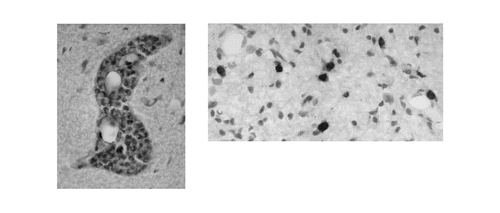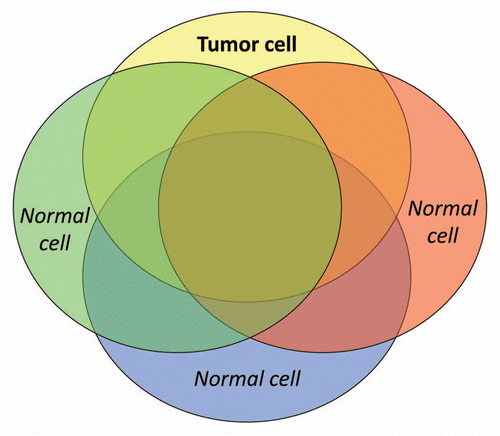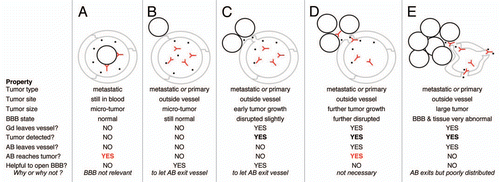Figures & data
Figure 1 Two patterns of tumor growth in the brain. Tumor often grows around blood vessels (left), but some tumors can also infiltrate the brain parenchyma (right).

Figure 2 Distribution of tumor antigens. A tumor cell displays a characteristic combination of components, many of which are also expressed by normal cells. Even though they may not be unique to the tumor, shared antigens can serve as practical tumor targets.

Figure 3 A varied role for the BBB. Possible relationships among tumor (black circles), gadolinium (Gd, black dots), antibody (AB, Y shapes), blood vessels (grey) and the blood-brain barrier (BBB), under different conditions of tumor growth are depicted.

Table 1 Tumor/antibody combinations emphasized in the text